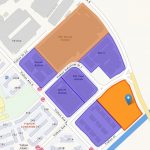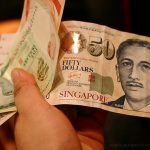Cushman & Wakefield and Suzhou Industrial Park sign strategic cooperation Memorandum of Understanding (MOU) in Singapore for investment expansion

Cushman and Wakefield and the Suzhou Industrial Park have signed a Memorandum of Understanding (MOU) for investment expansion opportunities for the Suzhou Industrial Park. The MOU was inked at the Suzhou Industrial Park’s (SIP) High-Quality Development and Pilot Free Trade Zone Investment Promotion Symposium in Singapore.
Under the agreement, the firm will leverage its Southeast Asian offices, including Singapore, Malaysia, Thailand, Indonesia, the Philippines and Vietnam, and its East China team, for investment expansion opportunities for the SIP as well as Singaporean and Chinese enterprises.
The close collaboration between Cushman & Wakefield and Suzhou government officials led to the Suzhou Industrial Park’s (SIP) High-Quality Development and Pilot Free Trade Zone Investment Promotion Symposium and the successful signing of the SIP strategic cooperation.
Dennis Yeo, Chief Executive of Cushman & Wakefield Singapore & Southeast Asia, signed the investment expansion MOU on behalf of Cushman & Wakefield, witnessed by Mr Shaomin Lan, Secretary of Suzhou Municipal Party Committee and Singapore government officials.
Cushman & Wakefield East China covers Shanghai, Hangzhou, Nanjing, Suzhou, Hefei and other important markets in the region. Since its beginnings in Shanghai in the 1990s, the East China team has driven the industrial and modern service development of cities in the Yangtze River Delta through its vast and ever-growing network of resources.
The team is part of a global network of nearly 400 offices across 70 countries that provide the world’s top enterprises high-quality services, ranging from site selection to asset management throughout the property life cycle. East China’s cooperation with SIP can be traced back to the early 2000s, when it first began to provide office building and industrial real estate services, such as leasing, valuation, consulting.
Dennis Yeo, Chief Executive of Cushman & Wakefield Singapore & Southeast Asia said “Rapid economic shifts present tremendous opportunities for Southeast Asia (SEA), within Asia Pacific as well as globally. A partnership of this scope boots opportunities for closer business ties and investments between China and SEA.”
Kelvin Li, Managing Director of East China at Cushman & Wakefield, said: “The memorandum will focus on our cooperation between East China and Singapore team as well as other Southeast Asia offices, to best serve SIP. The teams will improve outbound investment by leveraging the best of both China and Singapore business environments. In the future, we hope to copy the success of the China–Singapore SIP model, and apply it to other Belt & Road locations. Cushman & Wakefield will integrate international resources to serve industrial parks as an outbound BRI investment better.”
SIP is a county-level administrative area located in Suzhou, Jiangsu with a little Singaporean influence. In the late 1980s, as China’s modernisation drive gained momentum, a lot of Chinese delegations visited Singapore, which achieved notable economic success within 30 years of independence. The Chinese visitors were eager to learn modern management methods, while Singapore was also planning Economic Regionalisation, which focused on overseas investment.
In 1992, the idea of developing a modern industrial township with Singapore experience was broached. During his tour of southern China that year, China’s late paramount leader Deng Xiaoping said: “Singapore enjoys good social order and is well managed. We should tap on their experience, and learn how to manage better than them.”
After rounds of discussions and site surveys, both governments decided to join hands in developing a modern industrial park in the east of Suzhou. The China–Singapore Suzhou Industrial Park (CS-SIP) was thus born on February 26, 1994 when Chinese Vice Premier Li Lanqing and Singapore Senior Minister Lee Kuan Yew signed the Agreement on the Joint Development of Suzhou Industrial Park in Suzhou.
SIP has a total jurisdiction area of 288 km2, of which, the China-Singapore cooperation area covers 80 km2 with a planned residential population of 1.2 million. The China-Singapore Joint Steering Council led by Chinese Vice Premier Wu Yi and Singapore Deputy Prime Minister Wong Kan Seng held meeting every year to give directions for the development of SIP.
Jinji Lake (literally Golden Rooster Lake) is a small fresh water lake located in the central part of Suzhou Industrial Park. It occupies an area of 7.18 square kilometres and its average depth is about 2.5 to 3 metres. There are two man-made islands in the lake.
The SIP ran into trouble when local officials began building Suzhou New District (SND) industrial park to compete with it. As the Suzhou city government had only a minority 35 percent stake in the SIP, while they had a major stake in SND, the city government largely ignored SIP and concentrated on promoting the SND instead.
The project was supposed to transfer Singapore’s management skills to Chinese bureaucrats and to teach China how to build and run “business-friendly” commercial parks. But it ended up straining the close relations between Singapore and China and bringing home to Singaporeans the often unpredictable, and sometimes underhand, business culture of the Communist mainland.
Mr Lee Kuan Yew later conceded that the project had not turned out as planned and had made him more cautious about investments in China. He pointed to the difficulties that arose in signing agreements with the central government that were then implemented by local officials who “have their own imperatives”.
After incurring losses of some US$90 million over 5 years, the Singapore consortium lowered its stake to 35 percent, raising the Chinese consortium’s stake to 65 percent from 35 percent and reducing the Singaporean share from a planned 70 km2 to just 8 km2. The Chinese side appointed Wang Jinhua, vice-mayor of Suzhou and the former manager of the New District, as the new chief executive. In 2001, one year after Singapore lowered its stake, the park made its first profit of $3.8 million.






